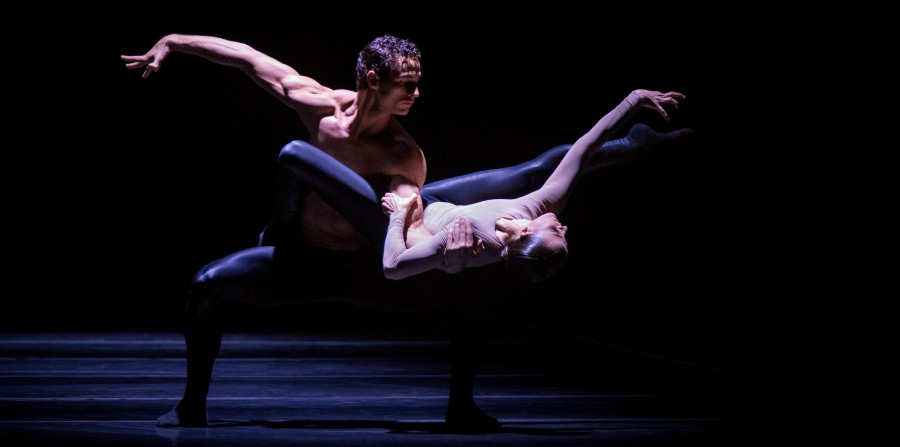Dance story
Balé da Cidade de São Paulo


Balé da Cidade de São Paulo

Balé da Cidade de São Paulo, Brazil
Artistic Director since October 2021: Cassi Abranches
Balé da Cidade de São Paulo is the official company of one of the world’s biggest metropolies and just like the city itself, it has a strong cosmopolitan personality.
Founded on February 7, 1968, as a classic dance company, in 1974, under the management of Antonio Carlos Cardoso, Iracity Cardoso and Marilena Ansaldi, the company assumed a contemporary dance profile which has been maintained to this day.
The successful international career of the Balé da Cidade began with an invitation from the Dance Biennal in Lyon, France, in 1996. Since then, its European trips have been acclaimed by specialist critics and the public alike. Numerous internationally famous artists have collaborated with the company, such as Gilberto Gil or Carlinhos Brown. Nowadays, the company, formed by 37 dancers, has a vast repertoire featuring the most renowned modern choreographers, like Ohad Naharin, Mauro Bigonzetti, Vasco Wellenkamp, Oscar Araiz and Cayetano Soto.
Performances & Tour organised by Mondigromax:
The Balé da Cidade de Sâo Paulo, which aroused the enthusiasm of the spectators on its previous visit to the Arriaga in 2009, returns to our stage with an extremely interesting program of three choreographies.
Antiche Danze
Choreography: Mauro Bigonzetti
Music: Ottorino Resphigi – Antiche danze e Arie
16 dancers
Duration: 35 minutes
World premiere: August 2014
Municipal Theater of São Paulo
Adastra
Choreography, light and costumes: Cayetano Soto
Music: Ezio Bosso
16 dancers
Duration: 25 minutes
World premiere: September 2015
Teatro Alfa – São Paulo
O balcão de amor (The Balcony of Love)
Choreography, lights and costumes: Itzik Galili
Music: Pérez Prado
20 dancers
Duration: 20 minutes
World premiere: April 2014
Municipal Theater of São Paulo
Teatro Arriaga, Bilbao, Spain
February 12 & 13, 2016
Antiche Danze is a work totally inspired by music, in which the musical taste of the Renaissance merges with the modern symphonic culture of the 19th century. From this fusion the choreographic idea arose: everyday gestures, jerky movements, choreographic pieces with fast dynamics; duets, solos and groups, with dresses and suits made of contemporary fabrics, but with an aesthetic of the time. The choreography develops with this contrast between tradition and modernity. And what better company than the Balé da Cidade de São Paulo capable of expressing these concepts of tradition and rupture? Mauro Bigonzetti
Adastra for me is a philosophy of life, a point of reflection, and at the same time a crusade to reach the inner star that each one of us carries within, in short, what is the energy to take you to your lucky star.
The road is a personal struggle to be what you have always dreamed of yourself, an unattainable dream, like being able to reach the stars. There is a merit to being able to reach the center of Adastra because the more adversities you have encountered, the more experience you will bring to your short life. Cayetano Soto
Adastra in Latin: “Per aspera ad Astra” or “Through effort, triumph.”
Between fantasy and reality, the desire for sanity.
A border line like a tightrope, worshiping a dream.
At the end of a day, you trade happiness with pain.
Located at the end of each breath.
Dance the soul of the daimon that flows towards the horizon.
At the edge of the abyss.
Itzik Galili
The Balé da Cidade de São Paulo, one of the most innovative and original dance groups and directed by Mönica Mion, offered us an extensive and varied program from its wide repertoire.
Dualidade@br
Choreography: Gagik Ismailian
Music: Amália Rodrígues, Henry Tourge, Wim Mertens, Delirium (recorded)
Canela fina
Choreography: Cayetano Soto
Music: Michael Gordon (recorded)
A Linha Curva
Choreography: Itzik Galili
Music: Percossa Group from Holland
Teatro Arriaga, Bilbao, Spain
March 20 & 21, 2009
Success at the Teatro Arriaga in Bilbao: “a powerful, modern and avant-garde proposal that is appreciated to see in the programming of the most important theaters in our cities”, comments the magazine En Stock.
Dualidade@br
Choreography: Gagik Ismailian
Music: Amália Rodrígues, Henry Tourge, Wim Mertens, Delirium (recorded)
Canela fina
Choreography: Cayetano Soto
Music: Michael Gordon (recorded)
Perpetuum
Choreography: Ohad Naharin
Music: Johann Strauss
Musical direction: Guerassim Voronkov
Orchestra of the Academy of the Gran Teatre del Liceu
World premiere: July 2003
Municipal Theater of São Paulo
Gran Teatre del Liceu, Barcelona
September 3, 4, 5, 6, 2008 (5 performances)
Press Quotes:
The debut of the Balé da Cidade de São Paulo at the Gran Teatre del Liceu demonstrated a considerable technical level and an enriching breadth of vision in the choreographic section… the unique and fragrant “Canela fina” by Cayetano Soto was very much liked… Fundamental South American company. September 6, 2008, ABC
The Liceu opens a season with the Ballet de São Paulo, a 40-year-old company that arrives with a work by Cayetano Soto, a young Sabadell (Barcelona) choreographer who graduated from the Catalan Theater Institute who walks his talent all over the world. His “Canela fina” (Fine Cinnamon) is a sea of sensations: visual, with a wardrobe of one color -cinnamon-, auditory, by the electronic rhythms of Michael Gordon, and, surprisingly, olfactory, with a cloud of cinnamon that permeates the entire theater. Soto, a name to follow and remember, he not only signs the choreography but also the scenography, the costumes and the lighting. His language is very physical, hard and uncompromising, in which every note is one movement, often unexpected. The solos, two-steps and three-steps denote sensitivity and are accurate and precise, but it is the choral moments that bring us the best, with frantic movements which follow in the wake of the more contemporary Forsythe. Although each of the dancers becomes a good executor, the ensemble does not reach the technical perfection required by the choreography and although the São Paulo Ballet has a lot of strength, good technique and a way of dedicated and joyful dancing, it lacks the millimetric precision that places a company among the first in the world.
The evening opened with “Dualidade@br”, by the Brazilian Gagik Ismalian, a piece of pure neoclassical style which collects the heritage of the two mother cultures of Brazil: Portuguese, through fado by Amália Rodrigues and an Indian-inspired wardrobe, and African through some rhythms electrominimalists with blood-red dresses that remind us of Brazilian rituals, a part of the country that has not reached this white company – we only saw one African American among the 25 dancers-. This search for the roots and the aestheticism of the young choreographer refer “Dualidade@bra” that early “Arenal” of Nacho Duato, saving a shocking and acrobatic step a trio that awakens the audience to so much lyricism.
The night closed with the ironic “Perpetuum”, from always applauded Ohan Naharin, where the decadent Vienna of Strauss’s waltzes -wonderfully led by Gerássim Voronkov at the head of the Liceu Academy Orchestra- left perfectly caricatured with a Tim Burton aesthetic and surprising stage ideas, like the military hanging from the wall. Three styles for a powerful and dynamic company, but no virtuous.”
AVUI. Francesc Melcion. September 6, 2008
